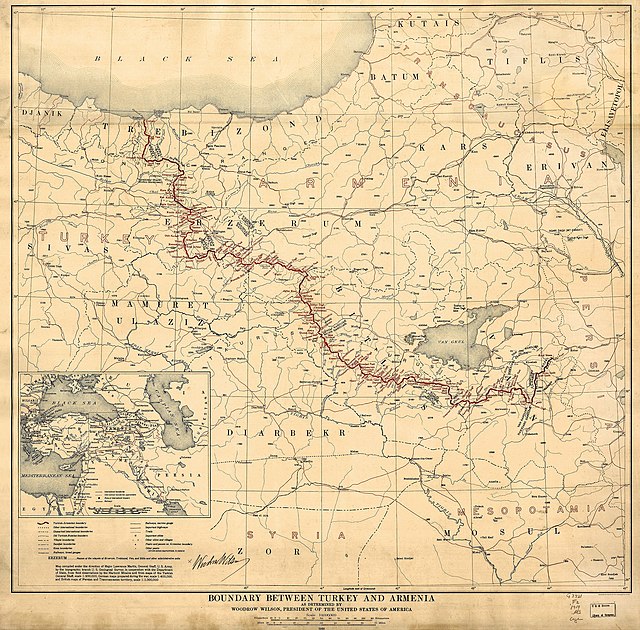Armenian national movement
The Armenian national movement included social, cultural, but primarily political and military movements that reached their height during World War I and the following years, initially seeking improved status for Armenians in the Ottoman and Russian Empires but eventually attempting to achieve an Armenian state.
"Hayk" The legendary founder of the Armenian nation.
ARF: Stepan Zorian, Christapor Mikaelian, Simon Zavarian
Hentchak: Avetis Nazarbekian, Mariam Vardanian, Gevorg Gharadjian, Ruben Khan-Azat, Christopher Ohanian, Gabriel Kafian and Manuel Manuelian
Arabo
United Armenia, also known as Greater Armenia or Great Armenia, is an Armenian ethno-nationalist irredentist concept referring to areas within the traditional Armenian homeland—the Armenian Highland—which are currently or have historically been mostly populated by Armenians. The idea of what Armenians see as unification of their historical lands was prevalent throughout the 20th century and has been advocated by individuals, various organizations and institutions, including the nationalist parties Armenian Revolutionary Federation and Heritage, the ASALA and others.
Mount Ararat, today located in Turkey, as seen from Armenia's capital Yerevan. The mountain is a symbol of Western Armenia for many Armenians.
The Armenian-Turkish border by the Treaty of Sèvres
Lebanese Armenians holding a poster during Turkish Prime Minister Erdoğan's visit to Beirut in November 2010. The text reads "[Mount] Ararat is and remains Armenian".







![Lebanese Armenians holding a poster during Turkish Prime Minister Erdoğan's visit to Beirut in November 2010. The text reads "[Mount] Ararat is and re](https://upload.wikimedia.org/wikipedia/commons/thumb/0/0e/Ararat_is_and_remains_Armenian.jpg/640px-Ararat_is_and_remains_Armenian.jpg)